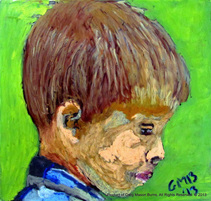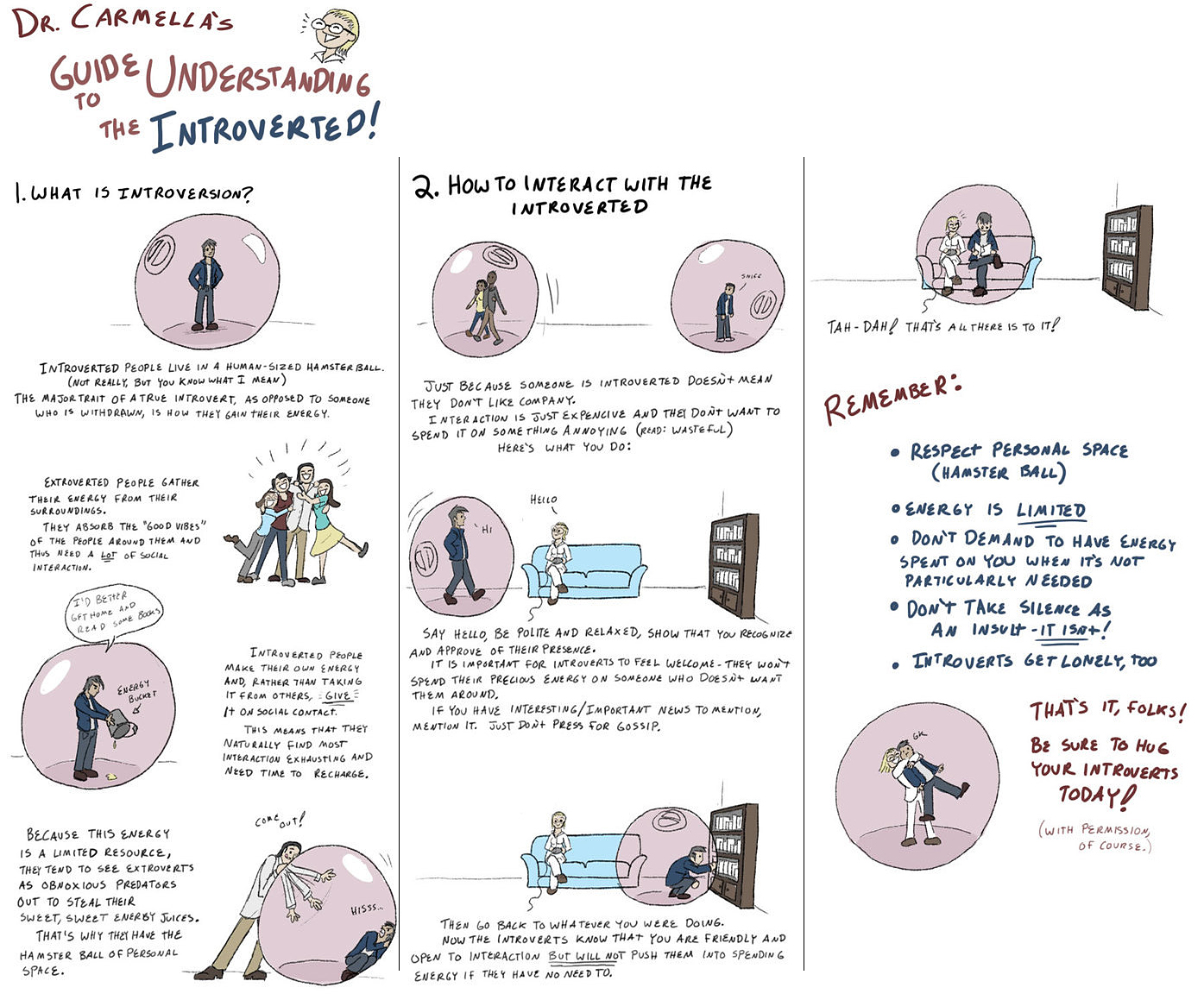Understanding Introversion
Part I this series is hereIntroversion and being an artist actually have little to do with each other. As much as people would like to pigeon-hole artists into the introversion category, I’m not convinced it’s true. There are an awful lot of artists out there who prefer to just want to be out there with other people, attending shows, or generally being the center of attention. As it happens I’m not one of them. I get my energy from inside, mostly by being alone. This does wonders for my creativity because it gives me time to think, but I do agree that there is some link to creativity and introversion. One of them is the fact that artists need time to think in order to produce, but the other connection is a fundamental misunderstanding of both how the world works and what people have to offer.
Understanding Introversion: Is Extroversion Rewarded?
I came across this video by Susan Cain called “The Power of Introverts”. She throws a lot of good data out there that I identify with. She says that up to 50% of the general population is introverted and that our society has changed from the contemplative in the 1800s to the personality in the 1900s and beyond. Even art collectors reward the extroverted artist these days; personality is so important with regards to making that connection to potential collectors because it gives the collector something else to hold onto instead of just the painting.

Understanding Introversion: Portrait of Tom Beyer – oil pastel on glass (2013)
Grouping With Unlike Minds
We need more good thinkers in leadership, because if the great socializers are the great leaders then our group mentality is likely to take over even more as we continually elect great socializers instead of great thinkers (not that these are mutually exclusive). Also, if the C students are the leaders then they’re more likely to hire more C students to help them lead as a result of identifying with that person. It takes the truly courageous to hire the person we don’t identify with to challenge us. In my mind, these are the greatest leaders. In other words, I believe our society isn’t representative in more ways than just race and gender, but in behavior and methodology as well.

Understanding Introversion: Portrait of Charles Rioux – oil pastel on glass (2013)
Does Introversion Need to be Fixed?
But somehow we’ve lost our way. Somehow we’ve started putting our students in circles in school instead of rows. She mentions this and this is a great point: why are we trying to “fix” our introverts? Is it because we want them to succeed in an extroverted world? If that’s your answer then you’re not thinking well enough. If you want introverts to succeed in an extroverted world then you want an extroverted world. Extroverts succeed in an extroverted world. Introverts succeed in an introverted world. We’re wired that way. Each gets his or her energy from these worlds. There’s nothing wrong with an extrovert getting energy in an extroverted way, and there’s also nothing wrong with an introvert getting energy in an introverted way. Stop trying to force the introverts to be extroverts. It doesn’t work.
Do each need to learn from the other? Yes. That’s why a blend is necessary. That’s why extroverts need as much down time and introverts need social time. Does it it need to be 50% – 50%? No, but a blend is necessary. What we need is each having the opportunity to think and act at optimal levels. That means that each needs his or her own world to be optimal, and that means we need to allow both sides to do what they do best.

Understanding Introversion: Portrait of Nivea Bona – oil pastel on glass (2013)
Everyone Needs a Mix
So what’s my point? As noted above, she mentions that today’s schools tend to put kids in circles rather than rows, and then at the end of her talk she asks for this to stop. Not this point exactly, but more this idea that group work will solve the world’s problems needs to stop. What we need is a mix of group and alone time.

The Guide to Understanding Introverts
